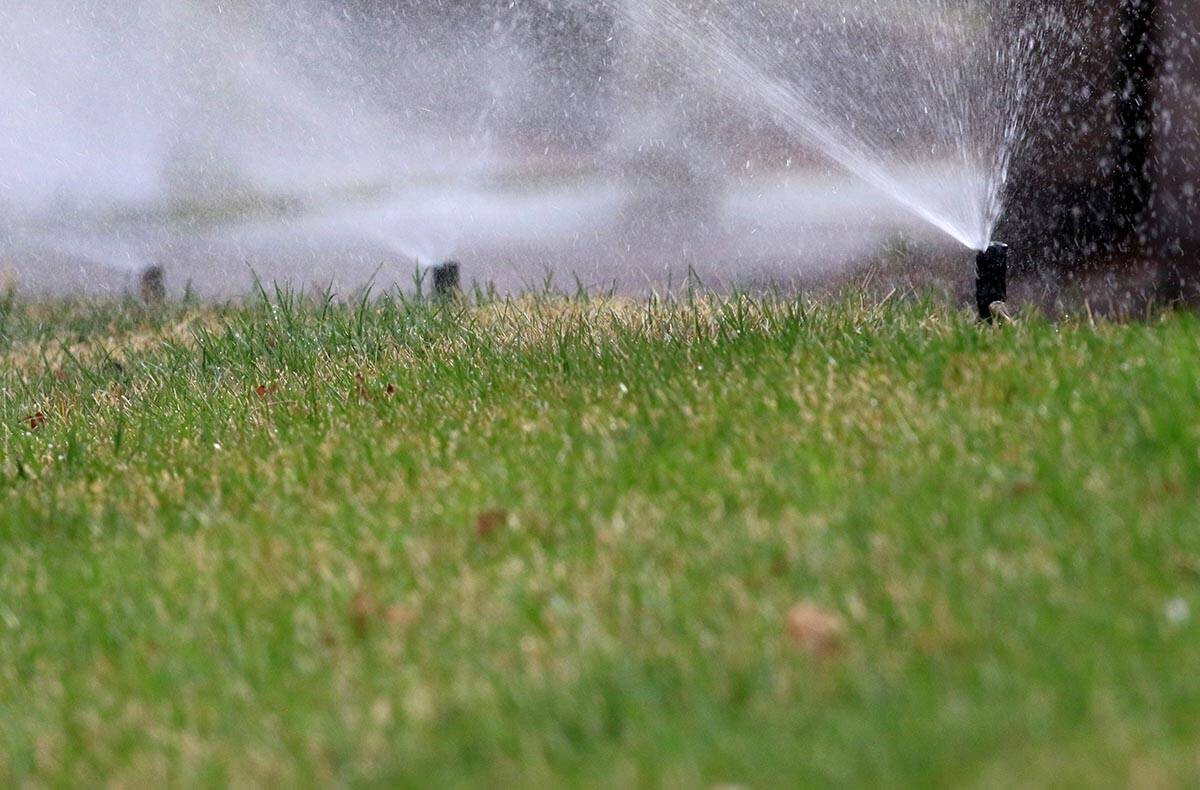EDITORIAL: Las Vegas does its part on conservation
Nevada and six other Western states reached a three-year deal in May to more efficiently manage their Colorado River allocations in an effort to address drought and falling water levels. In the aftermath of the agreement, the news regarding the river offers cautious optimism about the growth of Southern Nevada.
A record snowpack last year in the southern Sierra Nevada helped fill reservoirs and eradicate the drought. The National Integrated Drought Information System reports that, as of Oct. 17, no area of California was enduring drought conditions. Only 1.6 percent of Nevada remained under moderate drought.
Just 12 months earlier, drought conditions covered the entirety of the two states.
Meanwhile, Lake Mead last week hit its highest level in almost three years at more than 1,070 feet, up 25 feet from the start of 2023. The reservoir is expected to rise another 3 feet by next month, the Bureau of Reclamation projects. Recent precipitation has bolstered the snowpack in Colorado and California.
But the news is even better on the conservation front. According to the Southern Nevada Water Authority, Las Vegans are using drastically less water than in the past. For 2023, the valley’s water use averaged about 89 gallons per person per day. That’s down more than 14 percent from 2022 and an astonishing 62 percent decline from 1990. Keep in mind that this includes water use for the thousands of tourists visiting the Strip and environs on any given day.
For comparison, the average American uses about 100 gallons a day.
“If we can get to 86 (gallons per day per capita), we can extend our water supply out for the next 50 years and not have to bring new water to the valley,” Bronson Mack of the water authority said last week. “We can continue to live within our means.”
The numbers again highlight that residential development — particularly in Las Vegas — isn’t the problem. Conservation measures in urban areas throughout the Southwest have saved millions of acre-feet of this precious resource. Yet 80 percent of the water allocated from the Colorado supports agricultural interests, primarily in California. While farmers have also made progress with water-saving technologies and conservation, the fact remains that any effort to address the strained system must begin with a recognition that the river’s resources were over-allocated from the beginning and that agricultural users represent the most significant drain.
“Disputes between Basin states obscure the true problem underlying the Colorado River’s water crisis: an agricultural system that is wholly unsuited to the arid climate,” argues an August report by Food &Water Watch.
The next round of negotiations among the states — to extend the current deal beyond 2026 — has already begun. Southern Nevada is doing its part to more judiciously use its tiny river allotment. But any long-term solution must involve a re-evaluation of whether it makes sense to grow alfalfa and other water-intensive crops in the desert.





























